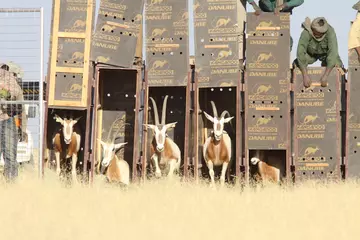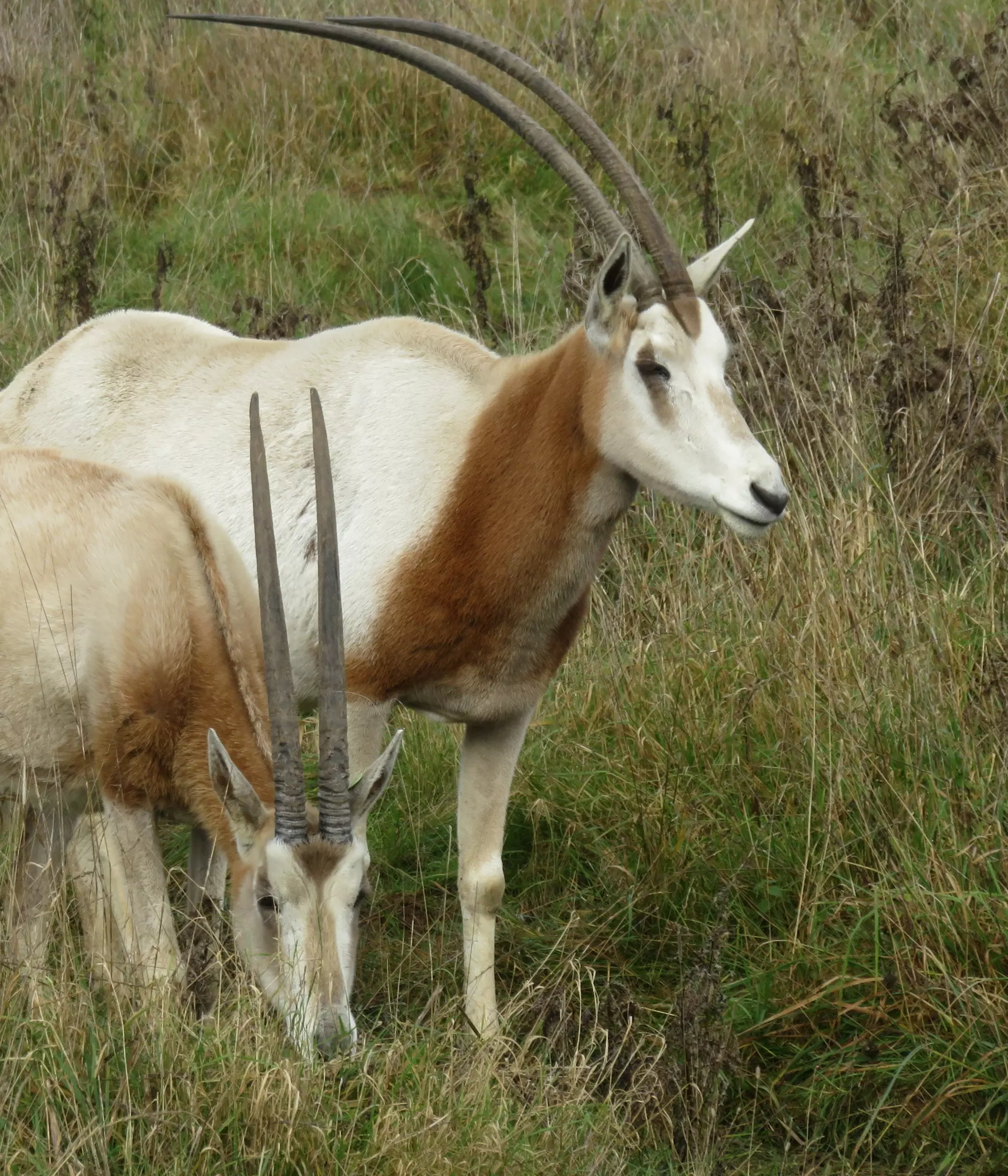
The arrival of a desert antelope to Whipsnade Zoo is a crucial milestone in efforts to bring the species back from the brink of extinction.
The young male scimitar horned oryx named Sabre - on account of his curved, sword like horns – travelled from Aalborg Zoo in Demark via road and sea to his new home in the Bedfordshire hills in October, as part of an international breeding programme for this extinct-in-the-wild species.
Here he was introduced to the resident herd of nine females, including Faye who the 18-month-old has been specifically matched with– with zookeepers hoping it won’t be too long before they welcome new calves to the group.
Zookeeper Gracie Gee said: “Sabre’s arrival is an exciting moment here at Whipsnade Zoo. We’re confident he’ll get along with our current all-female herd - and play a vital role in his species future survival.”
There are three international breeding programmes for the scimitar horned oryx coordinated in North America, Australasia and Europe with aims to ensure the herd at conservation zoos like Whipsnade, remain genetically diverse and can serve as a strong backup to wild populations. Gracie said the internationally coordinated breeding programme had saved the scimitar horned oryx from going extinct.

“The scimitar horned oryx hails from Chad, in central Africa and once thrived in one of the world’s largest protected areas, the Achim Game Reserve,” she said. “They play a hugely important role in their ecosystem – as grazers they maintain the grasslands and prevent the spread of desertification, but sadly, in the 1980’s the antelopes population began to plummet largely due to being hunted for its horns and meat. In 2000 the IUCN Red list declared the species Extinct in the Wild.”
Gracie said the team at the conservation zoo had played an important role in ensuring the iconic antelope didn't become extinct.
“Whipsnade Zoo has been breeding oryx for more than 30 years, and in 2014 two females from Whipsnade Zoo were transferred to Abu Dhabi. Alongside 23 other animals from different zoos, these oryx helped the Government of Chad and the Environment Agency of Abu Dhabi (EAD) to establish a genetically diverse “world herd” for reintroduction to the wild.”

In 2016 and 2017 the EAD were able to successfully re-introduce herds of scimitar horned oryx back into the wild, with descendants of Whipsnade Zoo’s oryx now thriving and reproducing in central Africa. ZSL, the conservation charity behind Whipsnade Zoo, is actively monitoring the scimitar horned oryx in the wild.
Gracie added that Sabre was settling into his new home enjoying the expansive green fields.
“Sabre is very graceful and playful. He’s been enjoying chomping away at the grass, as well as tucking into treats of browse and pellets as he gets to know his new home Hopefully it won’t be too long till he gets to know the rest of the herd and we hear the pitter patter of tiny hooves in the Bedfordshire hills.”
